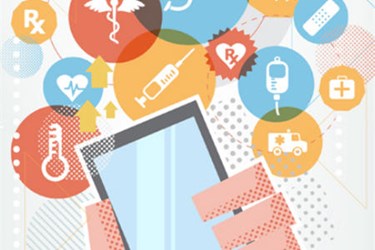mHealth's Duty Amid Today's Healthcare Instability

By Jon Michaeli, EVP of Business Development, Medisafe
In his first 100 Days, President Trump has taken Obamacare’s repeal and replacement off life-support and thrust it again into the spotlight. Will the ultimate legislative achievement upend the rules for insurance companies, physicians, and patients?
With the final prognosis of American healthcare still anybody’s guess, all stakeholders need to rely on each other until the system is healthy enough to support them. From consumer gadgets that monitor and administer vital medicine and data to cloud-based platforms which transmit the information to health professionals, the maturing mHealth industry has a duty to facilitate care and communication, keeping millions of Americans out of emergency rooms.
An example how current technology brings providers, consumers, and payers together for win-win solutions can be seen in the colossal problem of drug-drug interactions (DDI) and food-drug interactions (FDI). Its effects are felt system-wide:
- Fifty percent of U.S. pharmacies fail to mention DDI when they dispense dangerous drug pairs to patients without warning.
- One of five patient injuries or deaths occurring during hospital treatment is caused by adverse drug interactions. The average hospital stay doubles for a patient who has an adverse drug reaction during treatment.
- One of five Americans takes three or more prescription medications; nearly two of every three people take one or more medications having at least one DDI.
With patients filling multiple prescriptions from different pharmacies, and in the absence of communication between those and the multitude of hospital systems, unbeknownst to their prescribing physicians’ consumers are unwittingly combining medications that can cause interactions with each other. Aggregated, anonymous user data from our platform Medisafe reveals”
- 17 percent of people risk a severe reaction from combining diabetes and hypertension medication
- 13 percent of people risk a major reaction by taking antidepressants and pain medication together
- 12 percent of people risk a major reaction by coupling antidepressants with anti-seizure drugs. Aspirin has the highest interactions-to-user ratio with 2.7 DDI per user on average.
Food and lifestyle interactions only compound the issue, with caffeine undercutting the effects of certain asthma medications, leafy vegetables affecting blood-thinners, and soy interacting negatively with thyroid drugs. The consequences of drinking grapefruit juice or alcohol with some medications are well known, but most Americans are unaware of these other FDI hazards.
As far-reaching as the problem is, it is also nuanced. Doctors sometimes intentionally prescribe potentially interacting medicines because the risk is lower than the expected benefits. And drug adherence to some common medications is as much as 10 percent lower when paired with a potentially interacting prescription, as shown by Medisafe’s data.
From the largest insurance companies and most reputable hospitals to America’s thousands of doctors and their millions of patients, no one is spared from the potential dangers of the drug, food, and lifestyle interactions dilemma. All participants need heightened awareness to preserve patient quality of care at a time with so much uncertainty in the future of our healthcare system.
